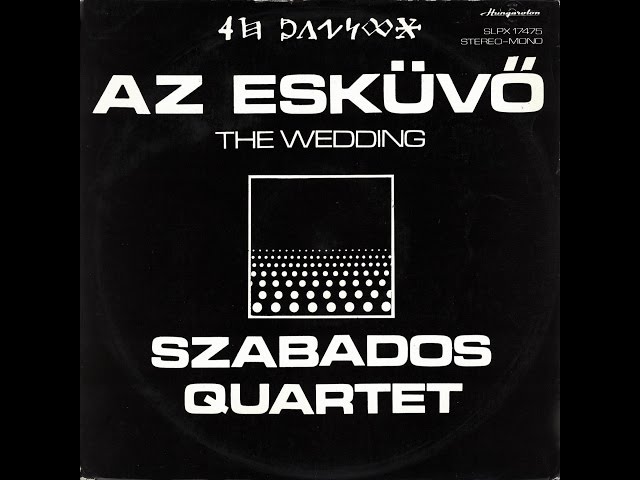Fifty years ago, the musical life was alive and well. Nothing proves this better than the fact that the newspapers of the time had plenty of articles about the star bands of the time. Reading the old reports, it also becomes clear that this musical culture still lives with us and in us. But what was the news about? – II. section
Omega and Szabados Quintet were, among others, the most important performers of 1972 in the Ifjúsági Magazin
The Youth Magazine In December 1972, the renewed Omega and the free jazz quintet of György Szabados both achieved international success. Among them, the former still managed to gain a permanent foothold abroad.
“The OMEGA group has had a busy, successful year behind them: it is Living Omega gold record, the anniversary concert, foreign tours, etc. They are already working on their new compositions in January.”

The Omega at that time he was well past the first peak of his career (1970), and when their number one songwriter, Gábor Presser, and their manager-drummer, József Laux, founded Locomotiv GT in the spring of 1971, many wrote them off. The Hungarian Record Company also distrusted their ideas regarding the planned new studio album (200 years after the last war, which was only released in 1998 with songs considered problematic), the label – according to some – saw more fantasy in LGT’s debut album.
They changed their image and style
The band then compiled it from new songs recorded at their concerts Living Omega his disc material, which was already accepted after neglecting a few tracks, but citing a lack of paper, the publication was still delayed. If there is no paper, aluminum will also be good – the members of the band thought – so the concert album was first published in Hungary, in an aluminum case, with red and later blue inscriptions (of which many versions were then made).
Omega succeeded in its international breakthrough – mainly in the German-speaking world – where in April 1973 it signed a three-year contract with the record company Bellaphon. During this time, the band grew into the most successful and profitable group of the West German company, and as “Eastern Europe’s number one rock band”, they entered the bloodstream of show business. In these years, the band only came home to visit, giving concerts only in the Ifipark and the Kisstadion.

All of this was done partly out of necessity: by the mid-seventies, due to their concert programs based on spectacle, not only the clubs, but also the open-air entertainment venues had outgrown. At that time, they were already visiting Europe’s big festivals with Manfred Mann’s Earth Band, Free, Golden Earring, Uriah Heep, Supertramp, and not always as a support band! It is no wonder that Bellaphon renewed their contract for another five years in 1975.
The secure future promised new opportunities for Omega: it changed its image and musical style. After the hard rock, more experimental era between 1972 and 1975, they moved towards space rock, characterized by the name of Pink Floyd. (See the band’s entire career at popkulturalis.hu)

Unlike Omega, he did not succeed in making an international breakthrough in a completely different field Free Quintetto. As it is Youth Magazine In its December 1972 issue, it is written: “DR. The quintet of GYORGY SZABADOS is one of the best bands of Hungarian free-jazz. They have performed at numerous foreign festivals with great success. At home, few people appreciate their music – no one is a prophet in his own country! – but the camp of jazz fans is growing.”
György Szabados (1939–2011) is one of the most influential and controversial figures in Hungarian jazz history. Perhaps also because, from the beginning, he consistently followed his own path, nourished by Bartók and free jazz traditions. And by replacing the traditional jazz rhythm with the asymmetric rhythm of Hungarian folk music, he created a truly unique Hungarian jazz school. From the beginning of the sixties, he was one of the first to experiment with the so-called free music concept, also in Europe, in which he stubbornly believed until his death. And time will prove him.

According to urban legend, Szabados, who received a classical music education and practiced full-time as a doctor until the end of the nineties, suggested to Endre Publik for the first time in 1963 at the Dália Klub that they play “just like that” without any prior discussion. With this, Hungarian free jazz was born. Which remained a personal matter for Szabados for a long time, because Publik defected to Sweden not long after, and it was not until the early seventies that he found companions – in the person of Mihály Ráduly, Sándor Vajda, Friedrich Károly, László Kimmel – who embraced his concept. Then came the younger ones, Mihály Dresch and Attila Lőrinszky, while he worked with László Melis, Tibor Szemző and Ferenc Körmendy at the Kassák Contemporary Music Workshop.
He is surrounded by disciples
In 1972, Szabados received the first prize in his category at the San Sebastian Jazz Festival, which obviously played a role in the fact that the artist, who was on the periphery of the genre, was able to record his first independent LP in 1974. Finally published in 1975, The wedding Szabados originally wanted a photograph of the same title by László Fejes for the cover of his debut album (Fejes was the first Hungarian to win the World Press Photo award in The Hague in 1961), but the authorities ultimately refused. However The wedding Its publication in 1975 really opened up new possibilities and horizons in the history of jazz in Hungary.
Even if you can call it jazz at all. Szabados is the type of musician who expected not only musical but also intellectual cooperation/identification from his peers. What is heard here is not a series of compositions built on the basis of the general rules of the genre, but rather independent, individual vision, free, improvisational music. But as Szabados put it twenty years later: “The world did not live in genres, but in persons, trends and qualities”.

